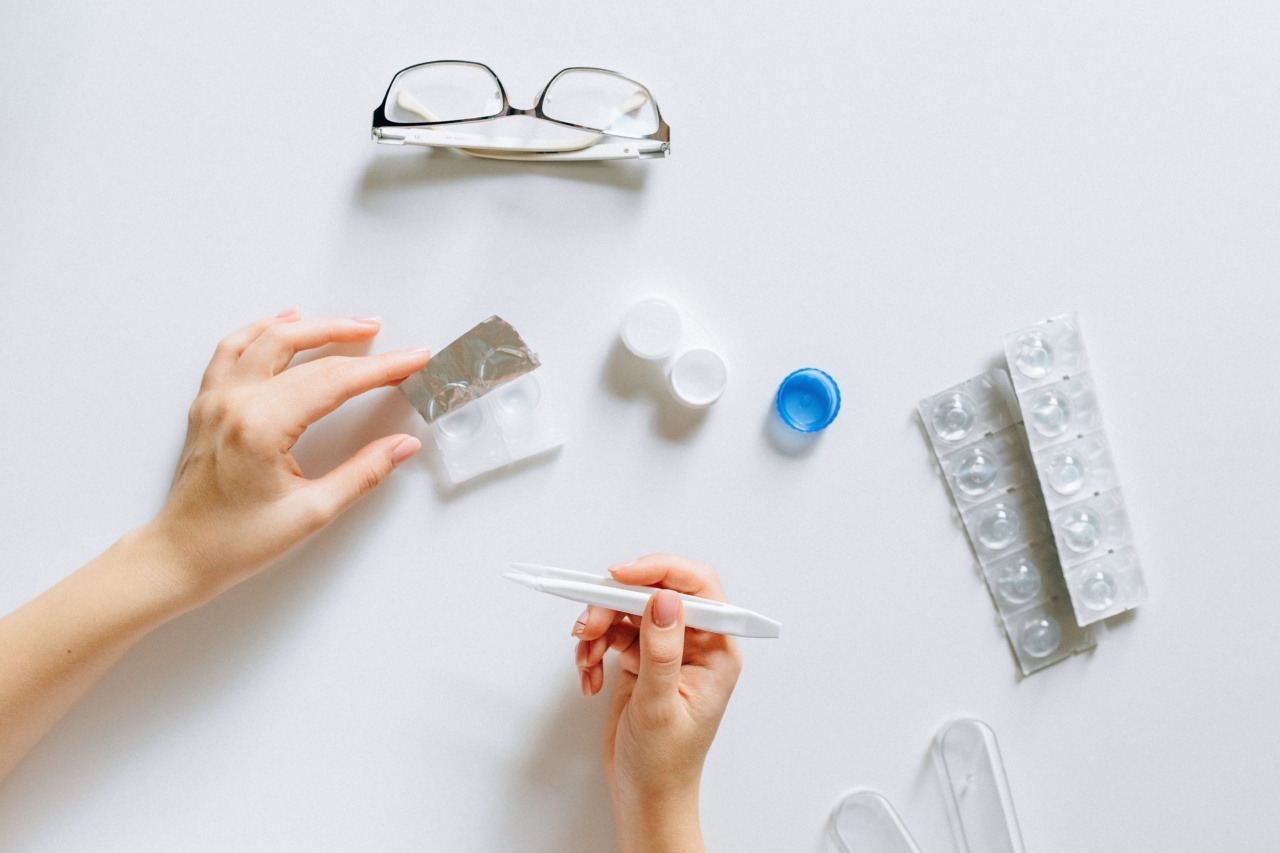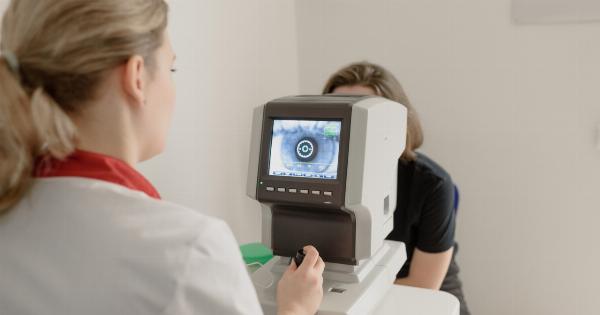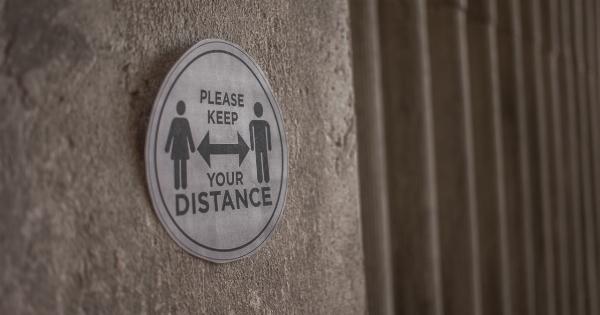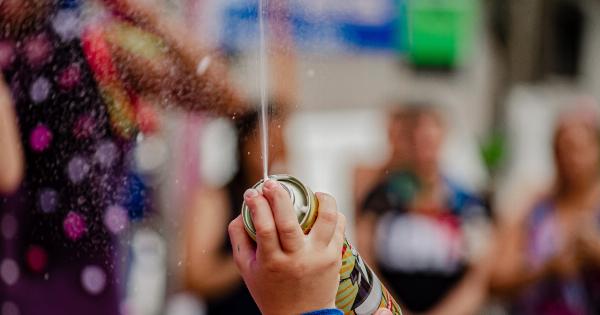Myopia, more commonly known as nearsightedness, is a common eye condition that affects millions of people worldwide. It is a refractive error that causes distant objects to appear blurry while nearby objects are clear.
In recent years, myopia has become increasingly prevalent, especially in children.
While glasses and contact lenses can correct myopia, they do not address the underlying problem of increased axial length of the eye, which is a significant factor in myopia progression.
Therefore, more people are turning to eye treatments that can slow down or even halt the progression of myopia. In this article, we will discuss some effective eye treatments for slowed myopia progression.
1. Orthokeratology (Ortho-K)
Orthokeratology, also known as Ortho-K, is a non-surgical method of correcting myopia by using specially designed rigid gas permeable contact lenses that reshape the cornea while sleeping. These lenses are worn at night and removed upon waking.
The reshaped cornea allows light to focus correctly on the retina, resulting in clearer vision. Additionally, Ortho-K has been found to slow down myopia progression, making it an excellent option for children and adults.
2. Low-Dose Atropine Eye Drops
Atropine eye drops have been used for decades to treat various eye conditions. Low-dose atropine eye drops, however, have been found to be effective in slowing myopia progression in children. This treatment is safe, affordable, and easy to use.
The eye drops are administered once a day, either in the morning or at night, for a prescribed period. Low-dose atropine eye drops work by relaxing and widening the pupils, which helps to reduce eye strain and slow down the elongation of the eyeball.
3. Multifocal Eyeglasses or Contact Lenses
Another treatment option for slowed myopia progression is multifocal eyeglasses or contact lenses. These lenses have different prescriptions in different zones, which help the eyes to focus better at different distances, reducing eye strain.
Multifocal lenses work by reducing the stimulus for the eye to elongate, thus slowing down myopia or halting its progression. Multifocal lenses can be particularly beneficial for children, as they can be instrumental in preventing the onset of myopia altogether.
4. Behavioral Changes
For some people, simple behavioral changes can help slow down myopia progression.
These changes may include reducing screen time, practicing good eye hygiene, and taking frequent breaks when working on close-up tasks, such as reading or using a computer. It is also important to get regular eye exams to detect any changes in vision or myopia progression early on. Good eye care practices can be helpful in reducing eye strain and slowing down myopia progression.
5. Peripheral Defocus Contact Lenses
Recent studies have shown that peripheral defocus contact lenses may also be effective in slowing down myopia progression.
These lenses are designed to create a uniform defocus across the retina, which can help to slow down the elongation of the eyeball. Peripheral defocus lenses work by shifting the peripheral image forward or backward, creating an image that is not focused on the fovea, which helps to reduce axial elongation of the eye and slow down myopia progression.
However, further research is needed in this area.
6. Vision Therapy
Vision therapy is a non-surgical, medically supervised program that aims to correct visual deficiencies such as myopia, strabismus, amblyopia, and other similar conditions.
Vision therapy works by strengthening eye muscles and improving eye coordination, which can help reduce eye strain and slow down myopia progression. Vision therapy is particularly beneficial for children as it can help prevent the onset of myopia and other visual impairments later in life.
7. Outdoor Activities
Spending time outdoors and engaging in physical activity has been found to be an effective way to slow down myopia progression.
Outdoor activities allow children to focus on distant objects, which helps to reduce eye strain and the stimulus for the eye to elongate. It is recommended that children spend at least two hours a day engaging in outdoor activities to reduce the risk of myopia development and progression.
8. Myopia Control Soft Contact Lenses
Soft contact lenses can also be used to slow down myopia progression.
Soft contact lenses that include specialized zones designed to create myopic defocus can help reduce the stimulus for axial elongation in the eye, thereby slowing down myopia progression. These lenses are designed to be worn during the day, and they are comfortable and easy to use, making them an excellent option for children and adults with myopia.
9. Pharmacological Treatments
Pharmacological treatments can also slow down myopia progression. Some of the pharmacological treatments for myopia include dopamine agonists, such as ropinirole, which have been found to reduce axial elongation in the eye.
Other treatments include pirenzepine, a selective M1 antagonist, and vasoactive intestinal peptide, which have also demonstrated myopia control effects. However, these treatments require a prescription and can only be prescribed by a qualified eye care provider.
10. Combination Therapy
Lastly, it is worth noting that a combination of the treatments discussed above may be more effective in slowing down myopia progression than using one treatment alone.
A combination of orthokeratology lenses and low-dose atropine eye drops, for example, has been found to be more effective in slowing down myopia progression than using either treatment alone. Similarly, a combination of peripheral defocus contact lenses and vision therapy may also be more effective than using one treatment alone.
Conclusion
Myopia is a common eye condition that affects millions of people worldwide. While glasses and contact lenses can correct vision, they do not address the underlying problem of increased axial length, which is a significant factor in myopia progression.
Fortunately, there are many effective treatments available to slow down or even halt the progression of myopia, including Ortho-K, low-dose atropine eye drops, multifocal eyeglasses or contact lenses, behavioral changes, peripheral defocus contact lenses, vision therapy, outdoor activities, myopia control soft contact lenses, pharmacological treatments, and combination therapy. If you or your child has myopia, it is essential to talk to your eye care provider to determine which treatment options are best for you.




























